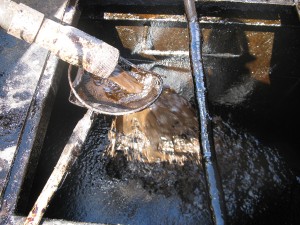Shale gas spurring plastics manufacturing growth – report
Looking ahead, the outlook for US manufacturing is even brighter, thanks to shale gas
By Seth Whitehead, EnergyInDepth
EID has highlighted several times in recent months how the shale gas revolution has spearheaded a manufacturing renaissance in the United States. The latest evidence of this trend was released this week in the Plastics Industry Association’s 2016 Size & Impact Report.
According to the plastics industry website www.plasticsnews.com, the report shows plastics industry employment was up nearly 10 percent in 2015 from its 2008 lows. It also notes that the American Chemistry Council (ACC) is currently tracking 560 plastic manufacturing investments in expansion or new construction nationwide.
Plasticsnews.com reports that “the development of shale gas feedstocks in the United States” is one of the three reasons the plastics industry is seeing this success, adding,
“… employment is growing after some steep declines, and that shale gas-related investments should help plastics fare better than other manufacturing sectors.”
That is because energy intensive industries such as plastics manufacturing have been able to bounce back from the depths of the Great Recession due to abundant and affordable natural gas. According to Steve Russell, vice president of the ACC’s plastic division:
“The ready availability of large amounts of natural gas is giving the U.S. plastics industry really a renaissance, turning it from among the highest-cost producers to one of the lowest in the world, increasing manufacturing in the United States, increasing exports to markets that we were not exporting to before, and along with all that comes jobs.”
Notably, the ACC’s tracking finds that Indiana, Michigan and Ohio — the latter of which EID has noted is benefitting not only from record shale production, but a veritable boom in shale-related industrial investment — are seeing the most plastic-energy related expansion, as the following graphic from the report indicates.
The report emphasized shale gas will remain important for continued plastic industry growth in the coming years, and recommended policymakers focus on tax reform and workforce development, in addition to shale gas moving forward. According to www.plasticsnews.com,
“The likelihood that the continued, responsible and sustainable development of these (shale gas) resources will help keep plastics companies ahead of their peers in other manufacturing sectors is very high.”
According to plasticsnews.com, Plastic Industry Association President and CEO Bill Carteaux noted positive reports on manufacturing in general and said, “There’s lots of reasons for optimism in manufacturing right now.”
As EID has highlighted many times before, this optimism can largely be credited to shale production:
- A 2015 ACC report highlighted how the abundance of affordable natural gas and natural gas liquids from shale will particularly benefit U.S. plastics manufacturing. According to the report, “The Rising Competitive Advantage of U.S. Plastics,” an additional 461,800 direct and induced jobs will be created over the next decade, while workers in the plastics industry and its supply chain will be paid $19.1 billion. That’s investment that supports our economies, workforce, and communities.
- The White House National Economic Council recently releaseda report that found since early 2010, U.S. manufacturing has added over 800,000 direct jobs. The White House links this directly to shale production, stating: “The surge in American natural gas production has lowered energy costs for manufacturers and driven job growth.”
- U.S. industrial electricity costs are 30 to 50 percent lower than those of foreign competitors, according to a 2015 study from the Boston Consulting Group (BCG). Fortune also recently reported that American manufacturing costs are now 10 to 20 percent lower than those in Europe and could be 2 to 3 percent lower than China’s by 2018.
- A recent study by researchers from the London School of Economics (LSE) found that for every two jobs directly created by fracking, at least one more is created in the manufacturing sector.
- Looking ahead, the outlook for U.S. manufacturing is even brighter, thanks to shale. A 2014 PricewaterhouseCoopers report found that the annual cost savings to the manufacturing sector from shale gas could mean $22.3 billion by 2030 and $34.1 billion by 2040. This saving, in turn, would lead to 930,000 shale gas-driven manufacturing jobs by 2030 and 1.41 million jobs by 2040, according to the report.
Clearly, as this latest report from the Plastics Industry Association further confirms, the fracking revolution continues to spur manufacturing growth that would have been unimaginable during the depths of The Great Recession just a few years ago — and the best may be yet to come.

Ph: 432-978-5096 Website: www.mapleleafmarketinginc.com









